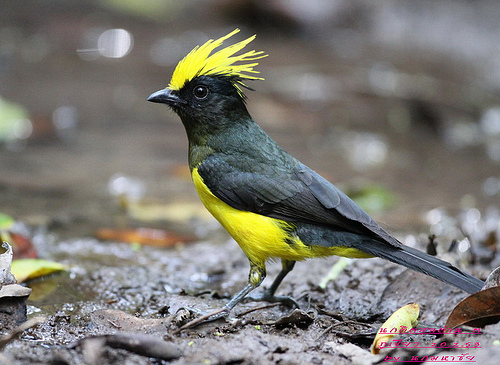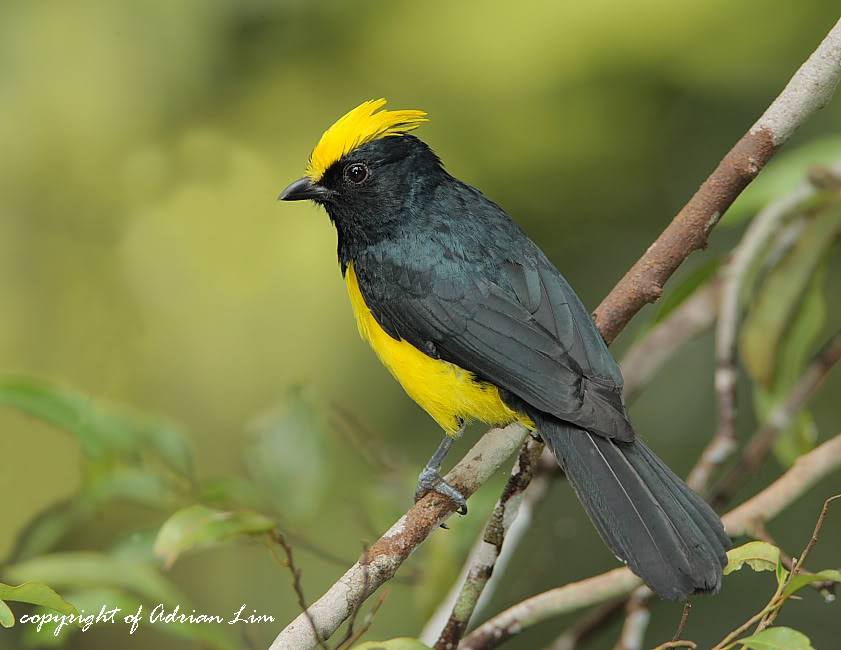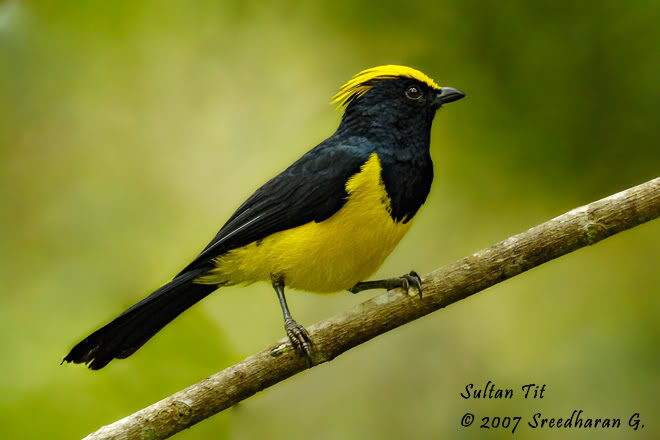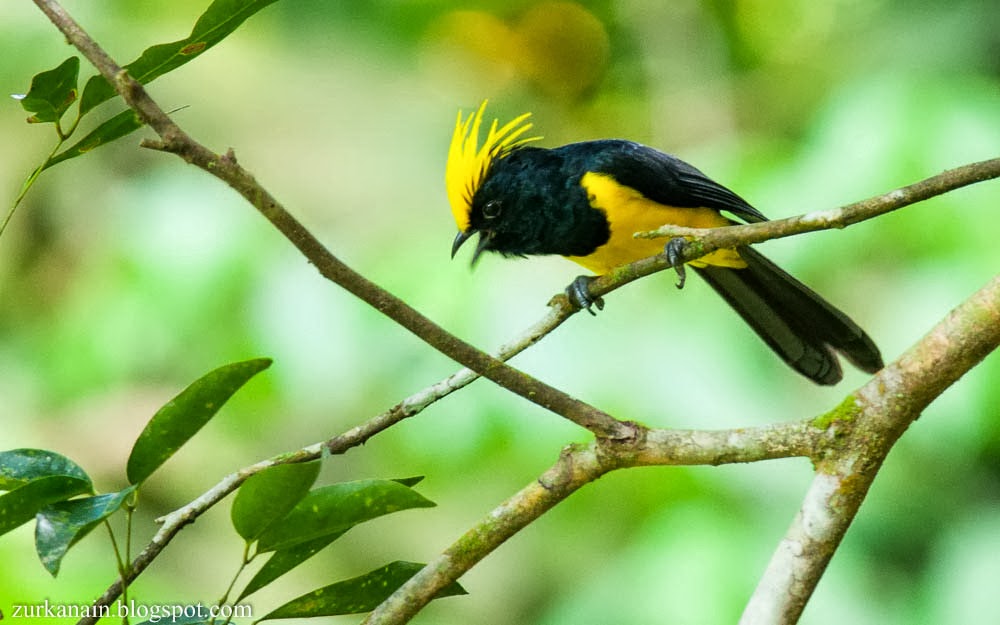
Melanochlora sultanea
SUBFAMILY
Parinae
TAXONOMY
Melanochlora sultanea Hodgson, 1837. Four subspecies.
OTHER COMMON NAMES
French: Mйsange sultane; German: Sultanmeise; Spanish: Carbonero
Sultбn.
PHYSICAL CHARACTERISTICS
8 in (20.5 cm); 1.2–1.7 oz (34–49 g); the largest of the tits, with
striking yellow and glossy black plumage in males; duller in females.
DISTRIBUTION
M. s. sultanea: eastern Himalayas, northeastern India, Myanmar,
northern Thailand; M. s. flavocristata: southern Myanmar,
Malaysia, Sumatra; M. s. seorsa: southern China, Hainan, northern
Indochina; M. s. gayeti: central Vietnam, southern Laos.
HABITAT
Wide variety of forest types, preferring light evergreen forests
and forest edges. Found mainly below 3,200 ft (1,000 m), but
recorded in mountainous areas up to 6,600 ft (2,000 m).
BEHAVIOR
Resident. During breeding, found in pairs and probably territorial.
Outside of breeding season, forms small flocks, often
mixing with other species. Song is series of loud, clear whistles,
and a variety of other calls are also given.
FEEDING ECOLOGY AND DIET
Forages mostly in upper canopy, but in some habitats (e.g.,
bamboo) will forage close to ground. Foods include invertebrates,
fruits and seeds.
REPRODUCTIVE BIOLOGY
Poorly known. Nests in holes and other openings in trees.
Timing of nesting April through July and clutch size five to
seven eggs. No information about incubation, brooding
BEHAVIOR
,
or breeding success.
CONSERVATION STATUS
Not threatened. A relatively widespread species. Has declined
in western part of range due to habitat loss, and is now rare.
SIGNIFICANCE TO HUMANS
None known.
Other popular Animals
Photo Gallery of - Sultan tit




 Animalia Life
Animalia Life